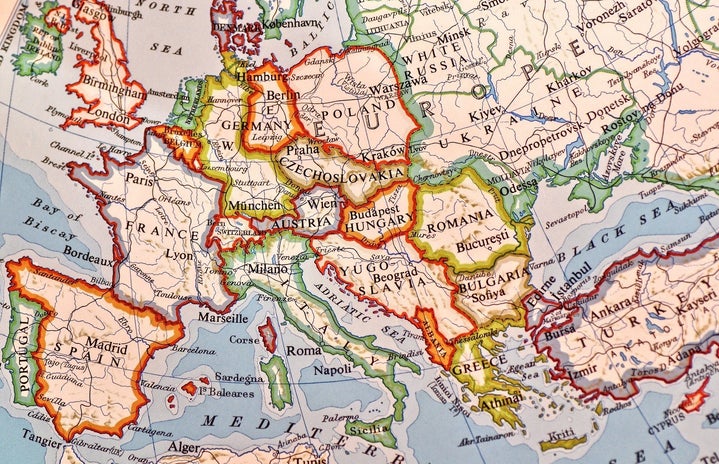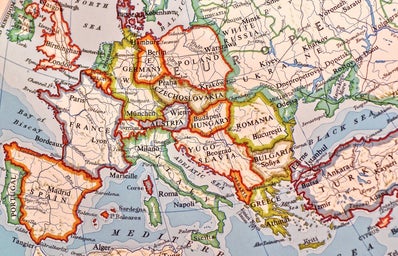*** edit: as of 11/03/2020 , The Guardian is reporting that there has been a stall in implementing the abortion ban due to the sheer volume of the protests against it.
For over two weeks, tens of thousands of protestors have been marching and blocking significant roadways and bridges in Poland after the near-total ban on abortion by a high court ruling on October 22nd. This ruling cannot be appealed and bans women from having an abortion due to fetal abnormalities – one of the leading reasons women have legal abortions in Poland (1,074 of 1,100 performed last year). However, because abortions were already limited, and doctors can refuse service to women seeking an abortion on religious ground, many went abroad or received illegal abortions instead. Doctors are also allowed to refuse to prescribe contraception on religious grounds, and families with disabled children are given very little to no financial or psychological assistance.
Restrictive abortion laws do not work to decrease the number of abortions performed. These laws only decrease the number of safe options available for women. In fact, in a study done by the Guttmacher Institute, “Unintended pregnancy rates are highest in countries that restrict abortion access and lowest in countries where abortion is broadly legal.” This information demonstrates how safe and accessible reproductive healthcare allows women to be better prepared to plan for, prevent, and take action in unintended pregnancy situations.
Since the fall of communism in 1989, the Catholic church has had significant influence over the country and, as a whole, pushed back liberal western ideals. Poland’s current ruling party claims to embody traditional Catholic values and asserts opposers as distinctly anti-Polish and anti-Christian. In doing this, the party enforces the perspective of women being domestic, family-driven wives while men go out and work. Because of this, the ruling in October was not the first time Polish lawmakers tried to ban abortions. In 2016, a similar attempt led to ‘black marches’ in which hundreds of thousands of women dressed in all black stood out in the rain and forced the government to back down. Again, church services and legal proceedings across the nation have been disrupted; many women wearing the handmaiden costume from the TV series The Handmaid’s Tale to represent their feeling of oppression. The goal of these protests is for the court to reverse itself and for the liberalization of abortion and reproductive laws.
Besides the handmaid’s costumes, another symbol of resistance has emerged during these protests: a red lightning bolt. Originally made by the feminist artist Ola Jasionowska, the lightning bolt is a universal symbol for the International Women’s Strike movement. From banners to stickers to t-shirts, the red lightning bolt has been projected into a powerful symbol that encourages protesters to continue fighting for gender equality and safe and affordable reproductive healthcare.
Even before this specific ban, Poland held some of Europe’s most restrictive abortion laws. Its governmental identity-based in religion leads to gender inequality and women’s rights being forsaken. In saying this, the current protests are justified and, more importantly, completely necessary. Looking to the local political sphere, the US is looking more and more as though it may be on its way to overturning Roe V. Wade, in which case, women in the US should be encouraged by the bravery of the Polish women in fighting day after day for their rights.
References:
Batycka, Dorian. “What’s behind the Red Lightning Bolt, the Main Symbol of Poland’s pro-Choice Marches?” The Art Newspaper, The Art Newspaper, 2 Nov. 2020, www.theartnewspaper.com/news/what-s-behind-the-red-lightning-bolt-the-ma…
“Day 5 of Abortion Rights Protests in Poland.” YouTube, Sky News, 27 Oct. 2020, youtu.be/yPqVxMeMpoo.
“Poland Abortion Protests Explained.” YouTube, Reuters, 30 Oct. 2020, youtu.be/1bAekMlVHa8.
Pronczuk, Monika. “Why a New Abortion Ban in Poland Is Tearing the Country Apart.” The New York Times, The New York Times, 27 Oct. 2020, www.nytimes.com/2020/10/27/world/europe/poland-abortion-ruling-protests….
“Unintended Pregnancy and Abortion Worldwide.” Guttmacher Institute, 17 Sept. 2020, www.guttmacher.org/fact-sheet/induced-abortion-worldwide.

